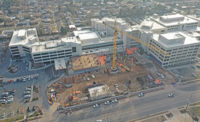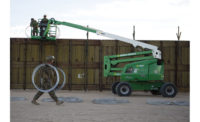Leaders of the region’s design firms say they are cautiously optimistic about the post-pandemic economy. Their firms reported 2019 revenue that held nearly steady from the previous year, and most say they have sufficient backlogs to avoid widespread layoffs or furloughs—for now. But many leaders also say they already have had projects delayed or shelved by owners.
Their stories are confirmed by a sharp decline in AIA’s Architecture Billings Index for April. The index, which measures demand for design services, saw its steepest decline on record, with a score of 29.5 for the month. Any number below 50 indicates a decrease in billings. The ABI’s project inquiries and design contracts scores also declined significantly, posting scores of 28.4 and 27.6, respectively.
“With the dramatic deceleration we have seen in the economy since mid-March, it’s not surprising that businesses and households are waiting for signs of stability before proceeding with new facilities,” the AIA’s chief economist, Kermit Baker, said in a statement. “Once business activity resumes, demand for design services should pick up fairly quickly. Unfortunately, the precipitous drop in demand for design services will have lasting consequences for some firms.”
|
Related Link |
The survey, conducted May 5-6, collected responses from 492 engineering firm leaders nationwide. It shows that firm leaders are less optimistic, with (27%) expecting a “return to normal” within six months compared with (37%) previously.
“We’ve had some [project] delays but not as many as we expected,” says Matt Schlageter, a principal with Martin/Martin Inc. “The longer it goes on, the more impact it is likely to have.”
Few design leaders think the new normal, whatever that is, will resemble the old one. “We’ll get back to something, but we just don’t know what that is yet,” says architect Chris Green, owner and principal of Ago Studios, Eagle, Colo. He says it may mean not only big changes in how much work firms have in the near term but also what that work looks like and how it gets done. He expects an evolution in the design of public venues, restaurants, hotels and offices, with more emphasis on safety and remote work, and that includes design firms themselves. “Firms will adjust to the issues of working remotely, but the big uncertainty is how long this thing will drag on,” Green says. “Backlogs will go quickly, and things could get pretty dicey in the fall.”




